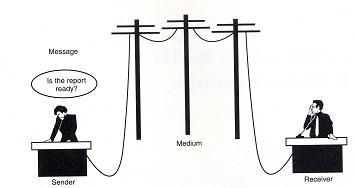Not long ago the word telecommunications implied voice communication.
Today this term is used to address both voice and data communications.
Networks are expanding to carry all forms of information such as voice,
video, data and multimedia.
We live at a time where technology changes rapidly. Technological innovations
from 10 years ago are now finding their way into our daily lives. In
1960ís the Department of Defense in USA developed a military network
capable of surviving attacks by routing the information around failed
nodes and even be able to fix itself if necessary. The network was named
ARPANET which later became the known to everyone Internet. They were
using a protocol which is very popular today, the TCP/IP (Transmission
Control Protocol/Internet Protocol).
The data communicationís revolution had begun! By 1973 personal computers
could easily stand in place for the main frame. Personal computers
were connected on the main frame as terminals. But there was a lack
of communication of the computers with each other. In 1973 Xerox introduced
to the computer world the Ethernet network. Robert Metcalfe developed
the protocol which is in use today.
Essentials
of Data Communications
For
communication of any type to present there must be four basic elements
present: a message, a sender, a receiver and a medium. The message should
be understandable and there should be an ability to detect errors that
may occur during data transmission. Letís check them out:
The
Message:
Obviously when communicating,
a message is needed. A message may vary in length and could be in several
forms. For example if you want to run a program on a computer, you type
its name or select its icon. When you do this you are communicating
with the computerís software by sending it a message to run the program.
Data communications message types of messages include files, requests
for services, response to requests, status messages, control messages
and correspondence.
The
sender:
The sender is the transmitter of the message. It could be a person or
an application or a machine with enough intelligence to originate a
message or response without human intervention or a system user, sensor,
badge reader or other input device.
The
receiver:
Bits being transmitted over a communication link are meaningless unless
received by someone. Receivers include computers, terminals, remote
printers or people. There are three sender/receiver combinations:
sender and receiver are in the same computer system, sender and receiver
are in different computer systems which are directly connected and sender
and receiver are in different computer systems that are connected via
intervening computers systems.
A node is a computer system connected to a network. Direct connections
between two computers are called links. The connection between two nodes
through an intervening node is called path. The determination of a message
path is called routing and the method used to determine the route is
called routing algorithm. In large networks the routing algorithm should
have sufficient intelligence to choose the best path available.
The
Medium:
Messages are carried from
sender to receiver through some communications medium such as wires,
coaxial cables, fiber optic cables, radio waves and infrared light.
Wires and cables carry electrical or light signals whether radio waves
and infrared light are wireless media.

We also have to consider understandability! In human language
if two people are not speaking the same language itís very difficult
to understand each other and many times is impossible. The same goes
for computers. Data may appear in a variety of formats. In order for
the computers to communicate the data are send and received in some
standard codes such as ASCII(American Standard Code for Information
Interchange) and the EBCDIC(Extended Binary Coded Decimal Interchange
Code).
Error may occur in any kind of communication. In human communication
we may detect errors easily which may be background noise, lack of concentration
or ambiguous statement. People can correct misspelling, grammatical
errors or even misstatements. Itís easy to retransmit a message. Computer
networks lack of reasoning ability. For that reason they also transmit
additional information along with the data to increase the chances of
detecting errors. Error detection in networks occurs on several levels,
such as node-to-node error checking across a link and end-to-end error
checking over a path.
Networks
A network is a set of devices connected by media links. A device
may be a computer, a printer or any other device capable of sending
and/or receiving data. The links connecting the devices are called communication
channels.
In
electronic communication, there are two basic types of networks. The
traditional network is a terminal network. This network consists
of a single host computer with attached terminals. The host computer
is called also server and does all or most processing whereas the terminals
which are connected on it and they are usually referred to as client
computers act as I/O devices through which a person gain access to serverís
applications.




